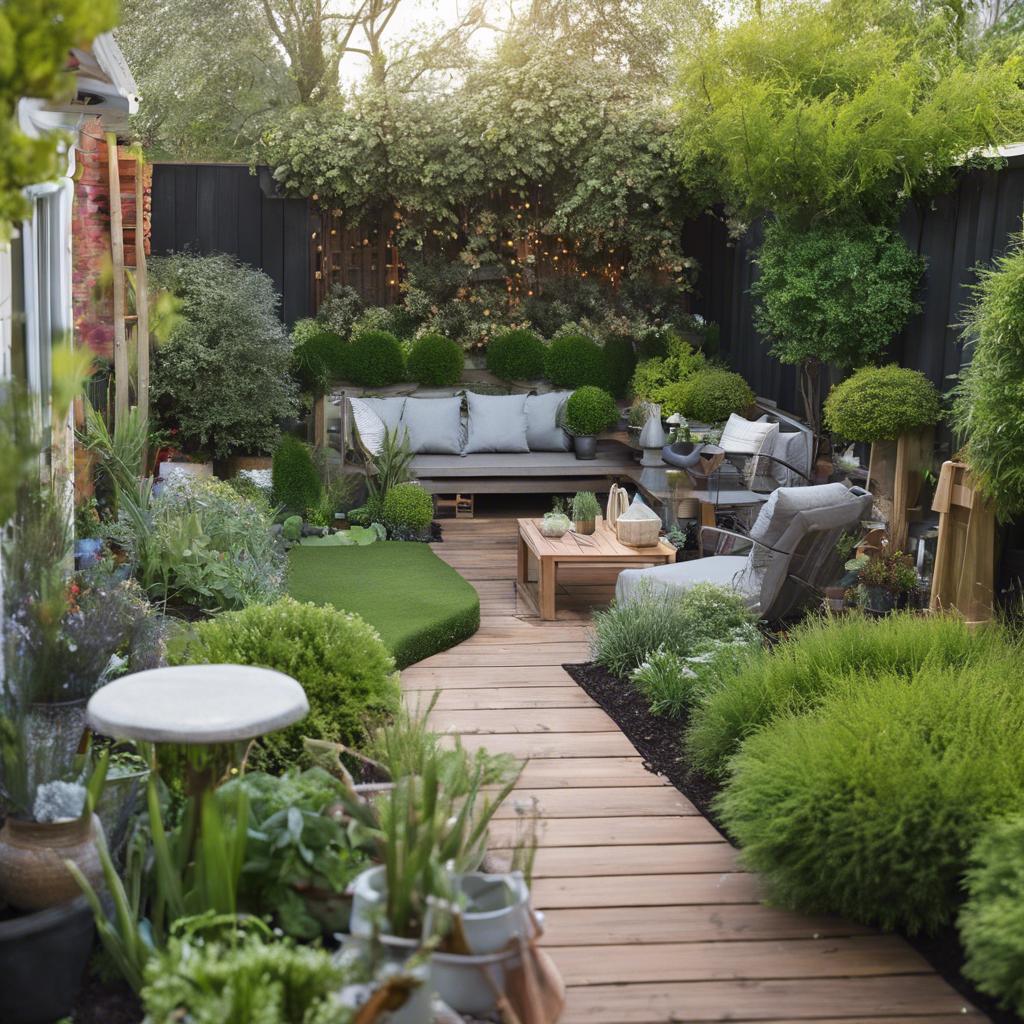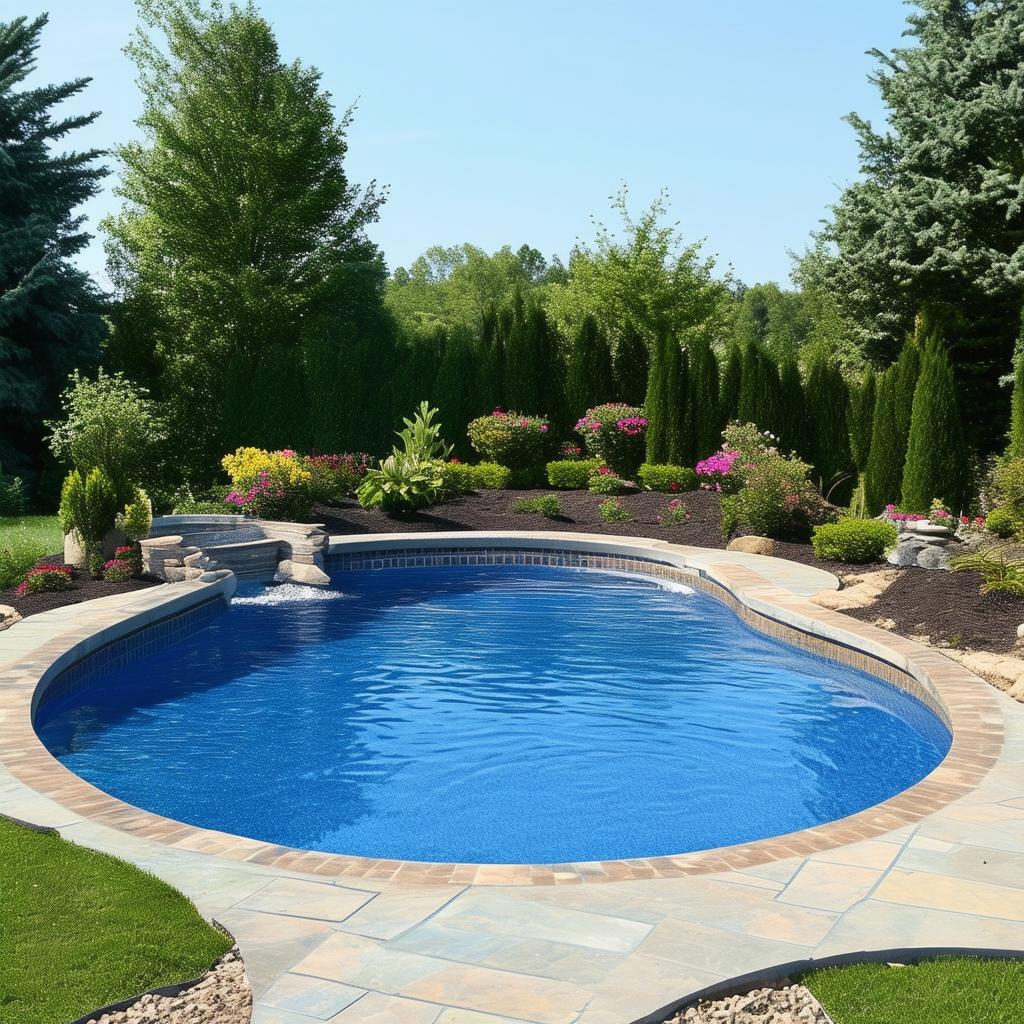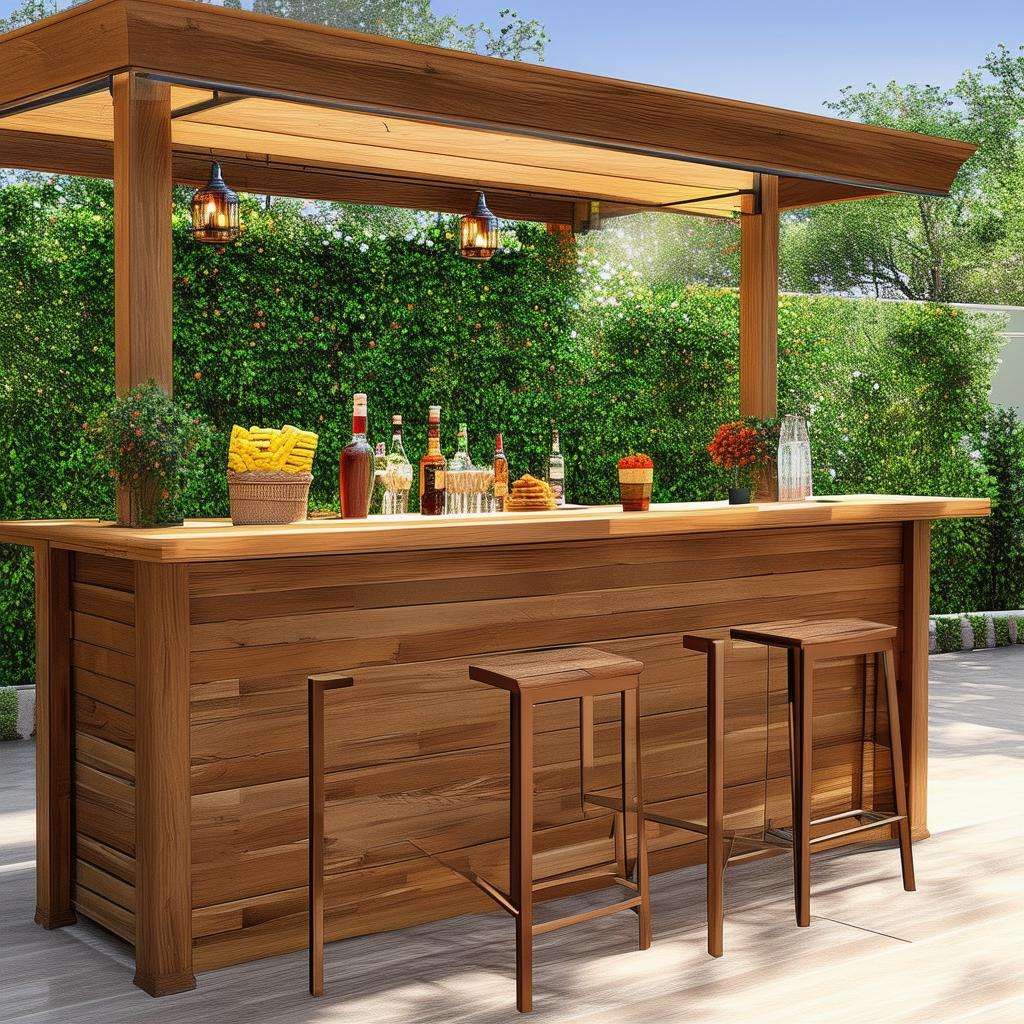In a world where space is a premium, creating a stunning garden oasis in a compact area may seem like a daunting task. However, with a little creativity and ingenuity, small garden design can unleash boundless beauty in even the tiniest of spaces. Whether you’re working with a balcony, courtyard, or tiny backyard, this article will provide you with the inspiration and tips you need to transform your limited space into a lush and inviting garden sanctuary.
Table of Contents
- Designing a Small Garden with Big Impact
- Maximizing Space Utilization in Small Gardens
- Choosing the Right Plants for Compact Spaces
- Creating Visual Interest in a Limited Area
- Utilizing Vertical Space for Added Greenery
- Incorporating Functional Elements in Small Garden Design
- Tips for Creating a Cozy Outdoor Oasis
- Balancing Hardscaping and Softscape Elements
- Strategic Lighting for Small Garden Beauty
- Maintaining and Caring for a Small Garden with Ease
- Q&A
Designing a Small Garden with Big Impact
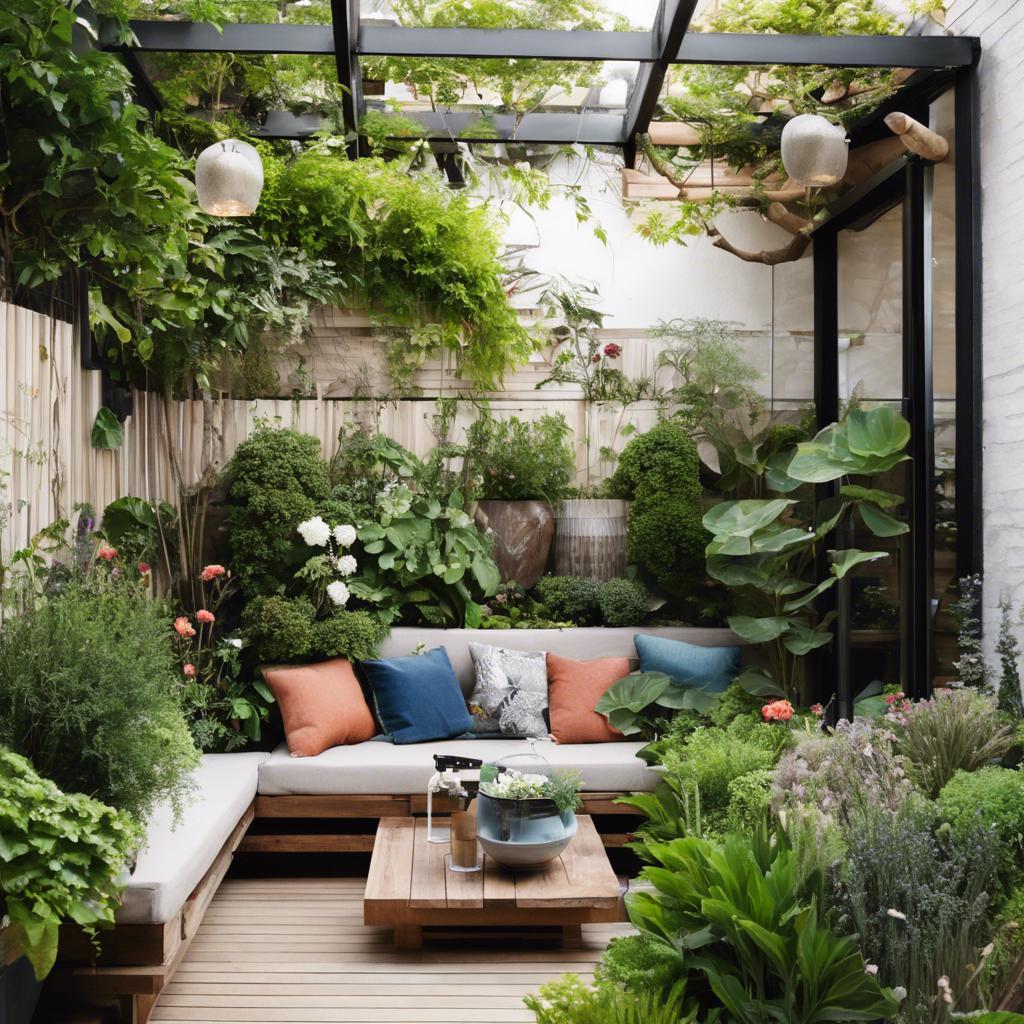
When it comes to designing a small garden, the key is to make the most out of every inch of space. By utilizing clever planting techniques and strategic placement of garden elements, you can create a lush oasis that feels much larger than it actually is. Consider incorporating vertical elements such as trellises, hanging planters, and tall grasses to draw the eye upward and create a sense of height in the garden.
One way to maximize impact in a small garden is to focus on a cohesive color scheme or theme. By sticking to a limited palette of colors, you can create a sense of harmony and unity throughout the space. Consider incorporating pops of bold color through flowering plants or vibrant accessories to add interest and draw attention to key focal points within the garden.
Don’t underestimate the power of clever hardscaping in a small garden design. By incorporating features such as a small patio, winding pathways, or strategically placed seating areas, you can create distinct zones within the garden that invite exploration and relaxation. Consider using materials such as natural stone, gravel, or wood to add texture and visual interest to the space.
Maximizing Space Utilization in Small Gardens
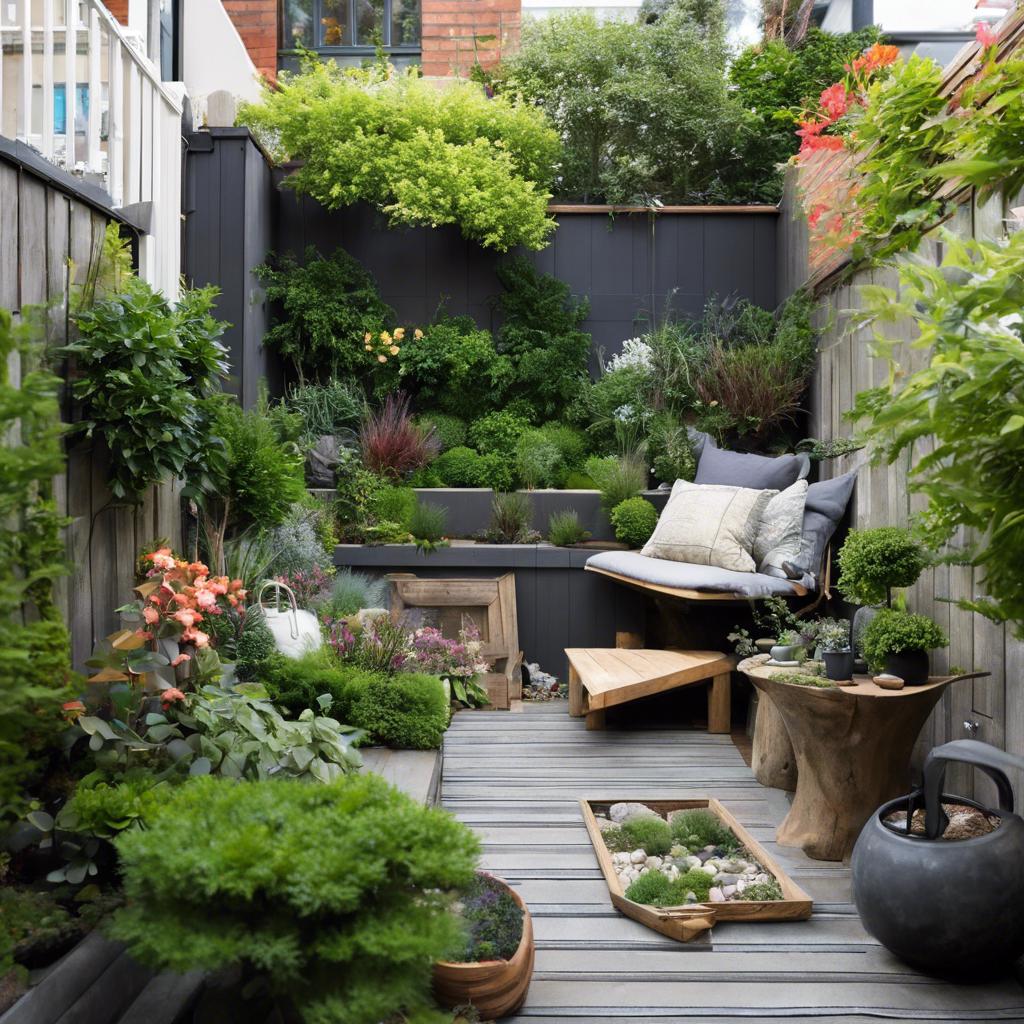
Small gardens may seem limited in space, but with strategic planning and design, they can become stunning and functional outdoor sanctuaries. One key aspect to achieving this is maximizing space utilization. By utilizing every inch of your small garden effectively, you can create a visually appealing and practical outdoor space that feels much larger than it actually is.
One approach to is to incorporate vertical elements. Vertical gardening allows you to grow plants upwards, freeing up valuable ground space. Utilize trellises, hanging planters, and wall-mounted shelves to add greenery and color without taking up precious square footage. This not only adds visual interest but also promotes better air circulation and natural light penetration throughout the garden.
Another way to make the most of limited space in small gardens is to use multi-functional furniture and features. Choose pieces that serve dual purposes, such as a bench with hidden storage, a table that doubles as a plant stand, or a fountain that also acts as a bird bath. This approach not only saves space but also adds versatility and practicality to your garden design.
Choosing the Right Plants for Compact Spaces

When it comes to designing a small garden, selecting the right plants is key to maximizing the space and creating a beautiful outdoor oasis. Compact spaces present unique challenges, but with the right plant choices, you can transform even the smallest area into a lush and inviting garden retreat. Whether you have a tiny balcony, a narrow strip of land, or a small courtyard, there are plenty of plant options that are perfect for compact spaces.
**One of the first things to consider when choosing plants for small gardens is their size and growth habit. Opting for plants that stay compact or have a vertical growth habit can help you make the most of your space.** Think about how each plant will fit into your overall design and consider factors such as height, spread, and shape. **Choosing plants that are well-suited to compact spaces will ensure that your garden remains manageable and visually appealing.**
**In addition to size and growth habit, it’s important to consider the light and climate conditions in your small garden. Different plants have different light requirements, so be sure to choose varieties that will thrive in the conditions you have available.** Take note of how much sunlight your garden receives throughout the day and select plants that are suited to either full sun, partial sun, or shade. **By choosing plants that are well-suited to the light and climate conditions of your space, you can create a thriving garden that brings beauty and joy to your compact outdoor area.**
Creating Visual Interest in a Limited Area
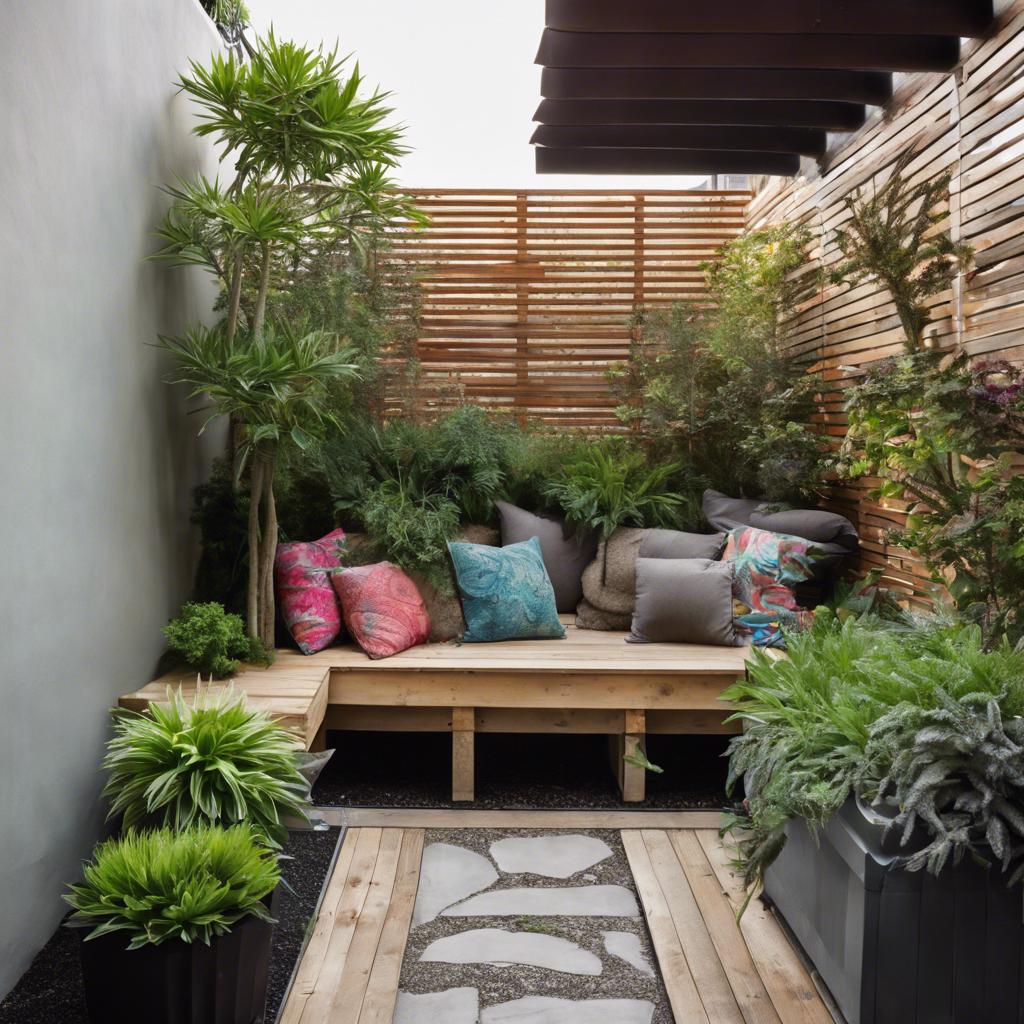
In small garden design, one of the key challenges is to create visual interest in a limited area. By incorporating clever design techniques and strategic planning, it is possible to transform a compact space into a stunning oasis of beauty. One effective way to achieve this is by utilizing vertical elements such as trellises, arbors, and hanging plants. These features not only add height to the garden but also create a sense of depth and dimension.
Another strategy for creating visual interest in a small garden is to play with textures and colors. Mixing different types of plants with varying leaf shapes and flower colors can add depth and complexity to the overall design. Consider planting a mix of groundcover, shrubs, and tall grasses to create a layered effect. Additionally, incorporating bold and vibrant colors can help to draw the eye and create focal points within the space.
When designing a small garden, it is important to make the most of every inch of space available. Utilizing clever storage solutions such as vertical planters, hanging baskets, and built-in seating can help to maximize the functionality of the area. By thinking outside the box and getting creative with design choices, even the tiniest of gardens can be transformed into a beautiful and inviting outdoor retreat.
Utilizing Vertical Space for Added Greenery
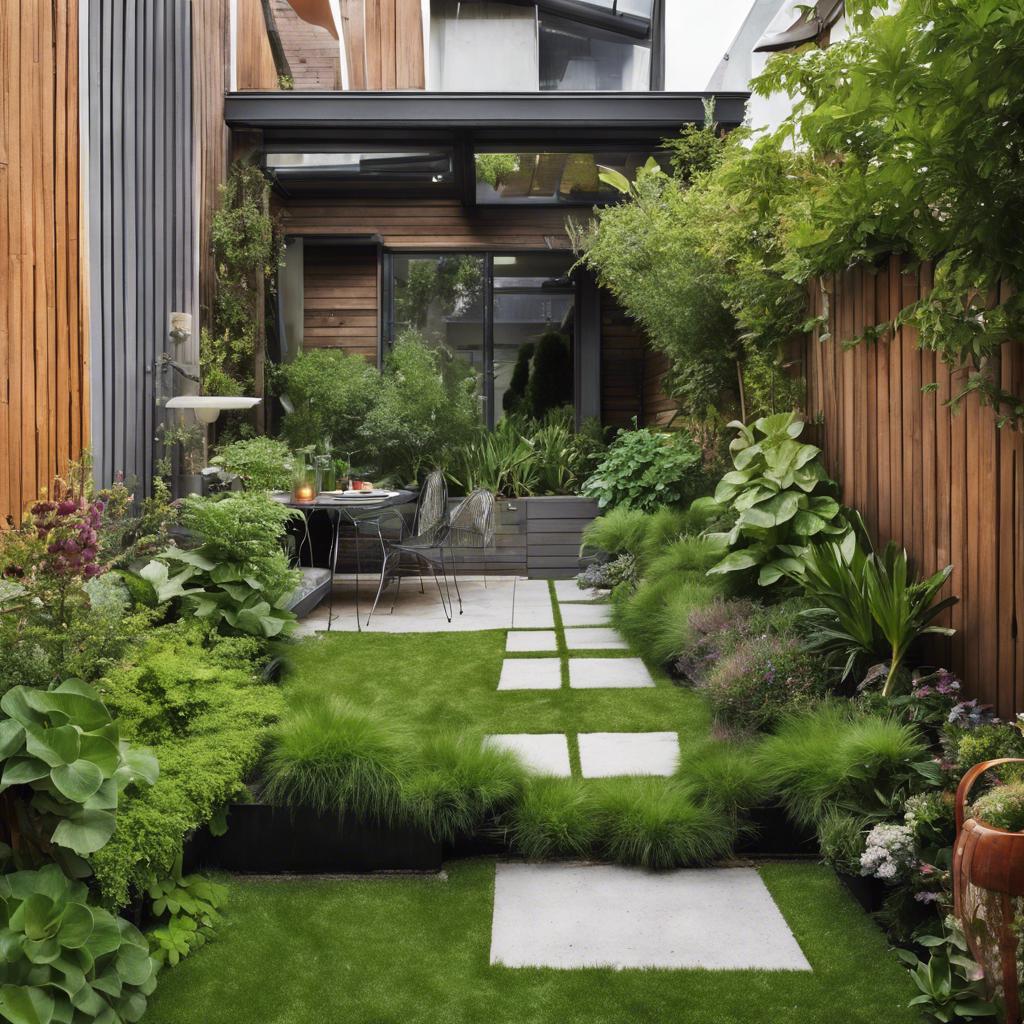
In small garden design, can transform a compact area into a lush oasis. Hanging planters, trellises, and vertical gardens are just a few ways to maximize space and create a visually stunning outdoor sanctuary.
By incorporating tall plants such as climbing vines or bamboo, you can draw the eye upwards and create the illusion of a larger garden. Vertical gardens made from stacked planters or repurposed pallets not only add greenery but also serve as unique focal points in a small space.
Don’t be afraid to mix and match different plant varieties to add texture and depth to your vertical garden. Consider incorporating trailing plants like ivy or ferns to create a cascading effect, or intersperse flowering plants for pops of color throughout the space.
Incorporating Functional Elements in Small Garden Design
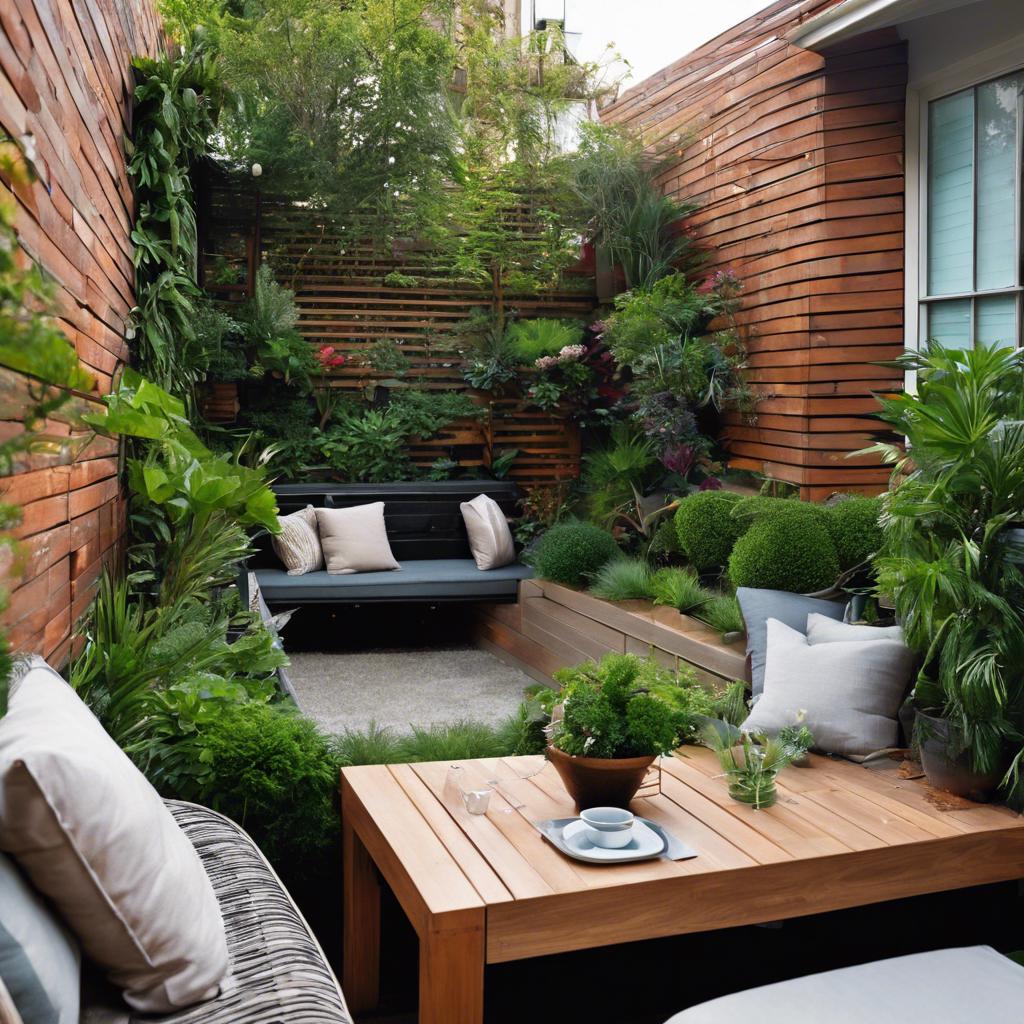
In small garden design, every element must serve a dual purpose to maximize functionality without sacrificing aesthetics. By incorporating functional elements such as multi-use furniture, vertical gardening, and clever storage solutions, you can create a space that feels boundless despite its compact size. Imagine a cozy seating area with built-in storage benches that also double as planters for herbs and flowers, or a vertical trellis system that not only adds visual interest but also provides privacy and shade.
One key tip for small garden design is to embrace the concept of “outdoor rooms” to create distinct areas within your space. Consider dividing your garden into different zones for dining, lounging, and gardening, using features like pergolas, arbors, and raised plant beds to define each area. By delineating these spaces, you create a sense of structure and organization that makes the garden feel larger and more cohesive.
| Functional Element | Benefits |
|---|---|
| Multi-use furniture | Maximizes seating and storage |
| Vertical gardening | Utilizes vertical space for planting |
| Clever storage solutions | Keeps garden clutter-free |
“Small spaces offer endless possibilities for creativity and innovation in garden design.”
Tips for Creating a Cozy Outdoor Oasis
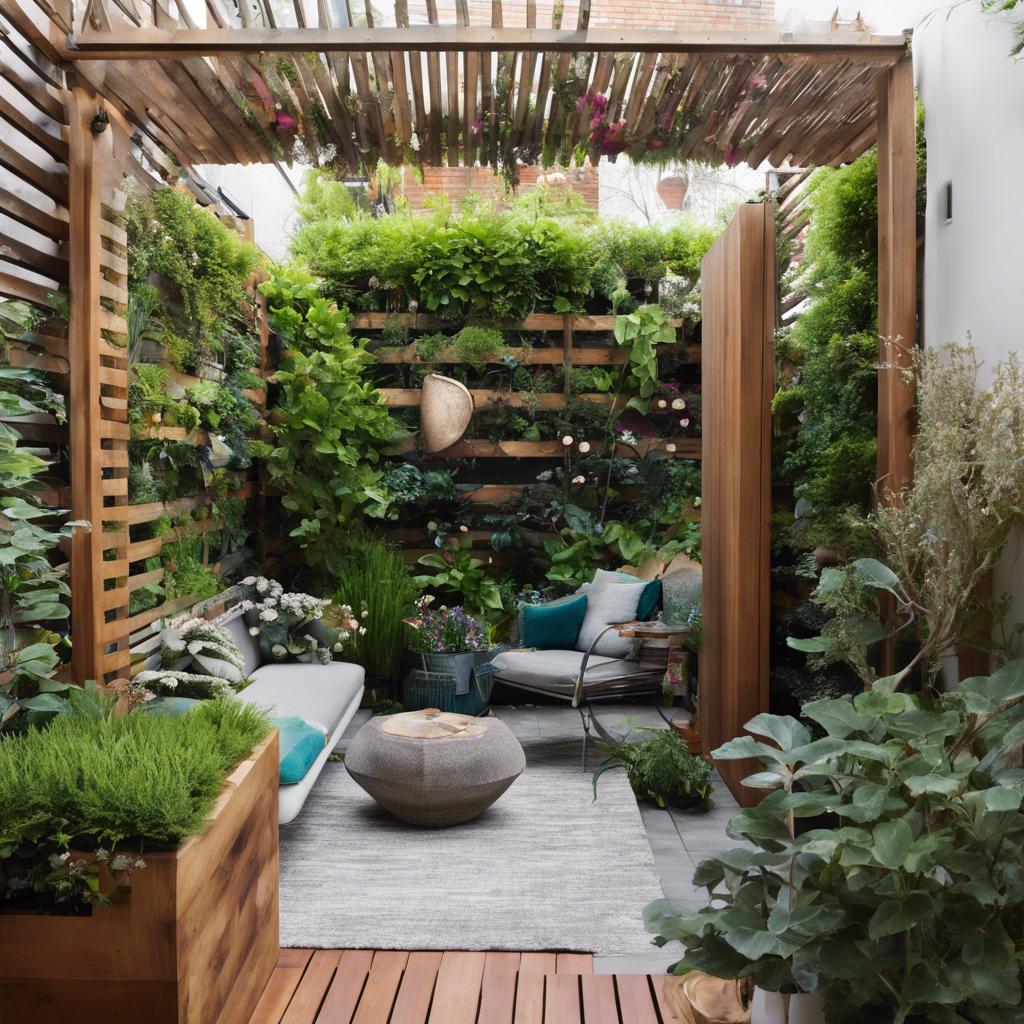
When designing a small outdoor space, it’s important to maximize every inch to create a cozy oasis. One tip is to utilize vertical space by hanging plants or installing shelves to display greenery and add visual interest. This not only adds a touch of nature but also creates a feeling of expansiveness in a compact area.
Another way to make the most of a small garden is to choose multi-functional furniture that can serve multiple purposes. For example, a bench can also double as storage or a table, saving space and adding functionality. Additionally, opt for foldable or stackable furniture that can be easily stored when not in use to maximize the space.
Adding soft lighting such as string lights, lanterns, or candles can create a warm and inviting atmosphere in the evenings. Consider using solar-powered lights to save energy and eliminate the hassle of wiring. This ambient lighting can transform a small outdoor space into a tranquil retreat where you can relax and unwind.
Balancing Hardscaping and Softscape Elements

When designing a small garden, it’s essential to find the perfect balance between hardscaping and softscape elements. Hardscaping features such as pathways, patios, and retaining walls add structure and functionality to the space, while softscape elements like plants, flowers, and trees bring life and color to the garden. By carefully integrating both hardscaping and softscape elements, you can create a harmonious and visually pleasing outdoor oasis.
One way to achieve balance in a small garden is to use hardscaping elements strategically to define different areas within the space. For example, a paved pathway can lead visitors through the garden, while a seating area with a pergola can provide a cozy spot for relaxation. By creating distinct zones with hardscaping features, you can maximize the functionality of the garden while maintaining a sense of cohesion.
When it comes to selecting plants for a small garden, opt for a mix of textures, shapes, and colors to create visual interest. Consider using a variety of ground cover plants, shrubs, and small trees to add layers and depth to the space. By blending different types of plants together, you can create a lush and dynamic garden that feels larger than it actually is.
Strategic Lighting for Small Garden Beauty
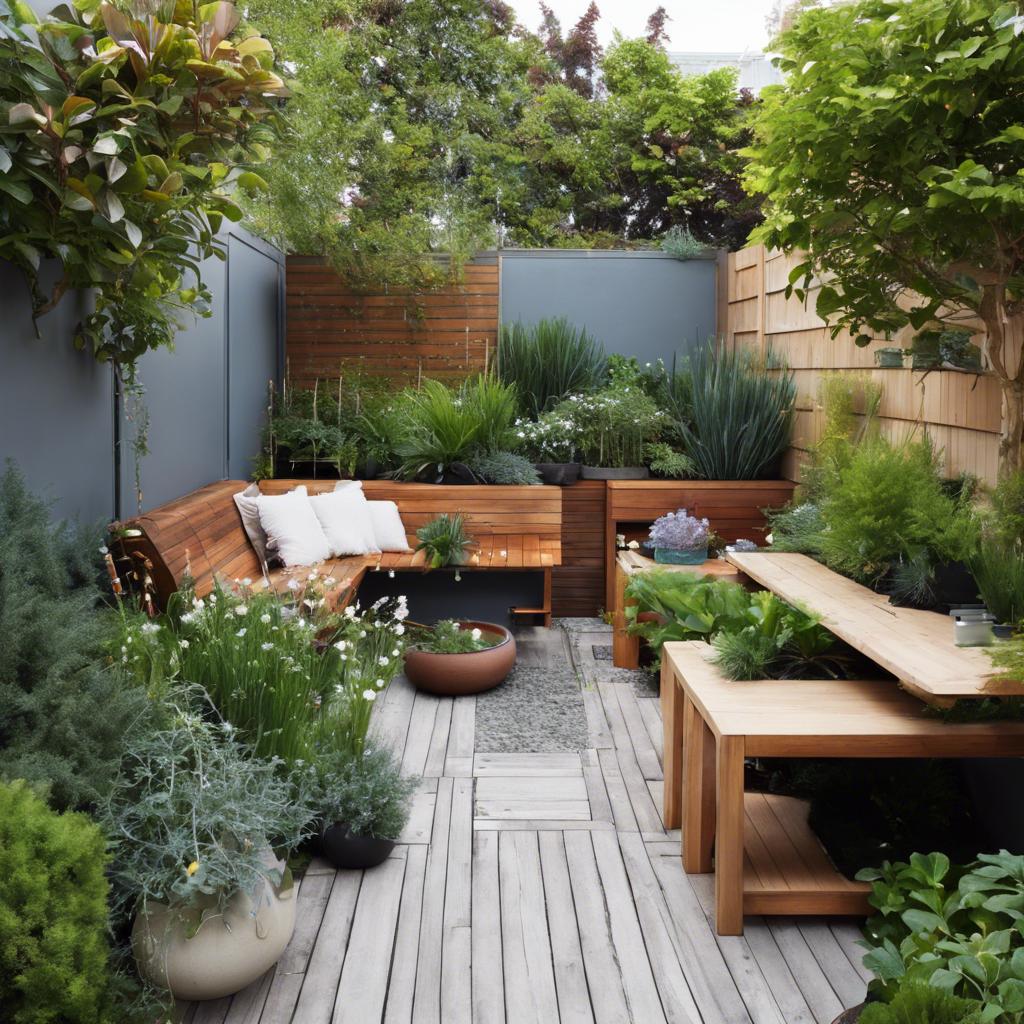
In a small garden, strategic lighting can make all the difference in creating a beautiful and inviting space. By carefully planning the placement of lights, you can highlight key features, create ambiance, and extend the usability of your outdoor area well into the evening hours. Think of lighting as the finishing touch that brings your garden design to life.
When designing lighting for a small garden, consider the following tips:
-
- Use soft, warm lighting to create a cozy atmosphere.
-
- Focus on highlighting focal points such as a unique tree or a beautiful flower bed.
-
- Consider incorporating solar lights for an eco-friendly and cost-effective option.
| Lighting Type | Benefits |
|---|---|
| String Lights | Perfect for creating a whimsical and romantic atmosphere. |
| Spotlights | Ideal for highlighting specific plants or garden features. |
Remember, less is often more when it comes to lighting a small garden. Focus on creating a subtle glow that enhances the natural beauty of your outdoor space.
Maintaining and Caring for a Small Garden with Ease
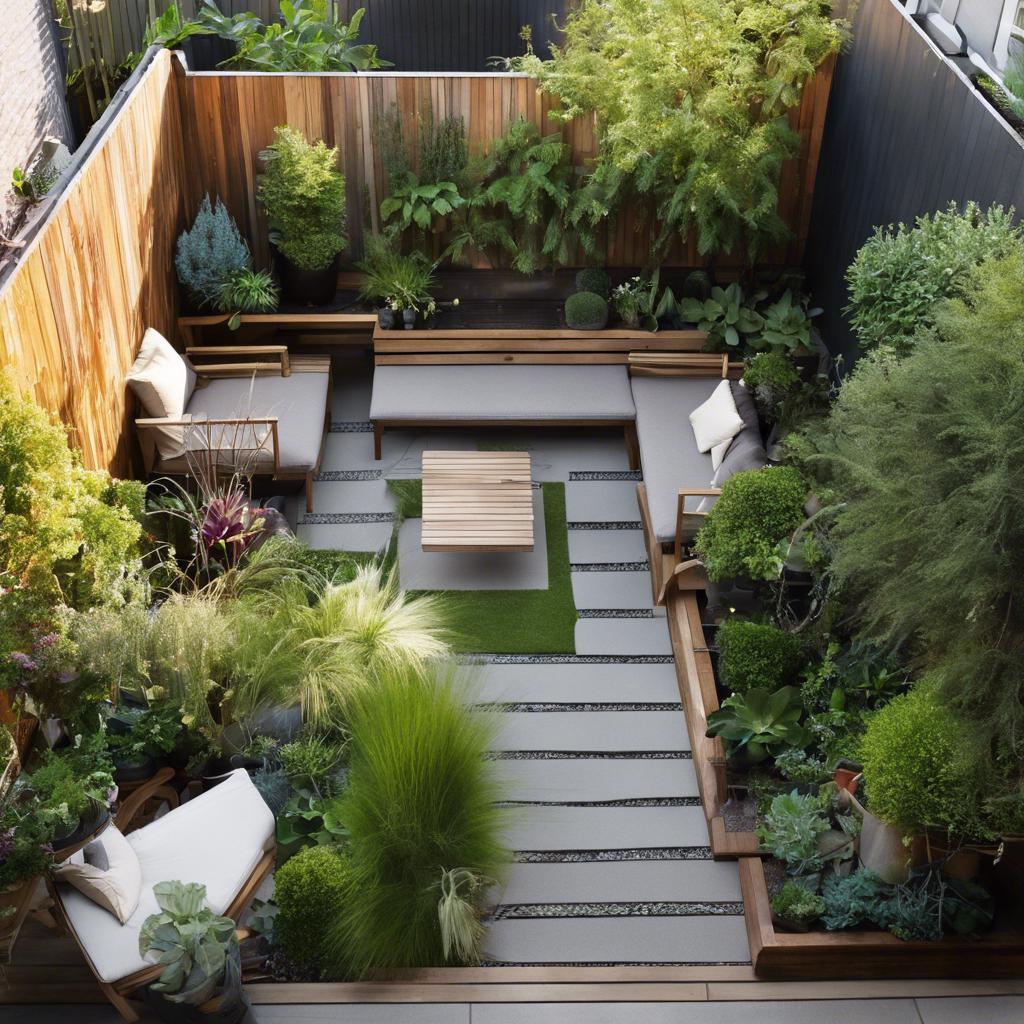
For those with limited outdoor space, a small garden can still serve as a tranquil oasis of beauty and relaxation. With strategic planning and thoughtful design, even the tiniest of gardens can be transformed into a lush and vibrant escape. By incorporating elements such as vertical gardening, container plants, and creative seating arrangements, you can maximize every inch of your small garden to create a visually stunning and functional outdoor retreat.
One key aspect of maintaining a small garden with ease is to carefully choose low-maintenance plants that are well-suited to your specific climate and growing conditions. Opt for native plants that require minimal water and upkeep, and consider incorporating a mix of evergreen shrubs, flowering perennials, and groundcover to add depth and texture to your garden space. Additionally, using a layer of mulch can help retain moisture, suppress weeds, and improve overall soil health in your small garden.
When caring for your small garden, it’s important to regularly prune and deadhead plants to promote healthy growth and prevent overcrowding. Keep an eye out for pests and diseases, and address any issues promptly to avoid widespread damage. Remember to water your plants consistently, preferably in the morning or evening to minimize evaporation, and fertilize as needed to provide essential nutrients for optimal plant health and growth.
Q&A
Q: What are some key considerations for designing a small garden space?
A: When designing a small garden space, it’s important to consider scale, functionality, and maximizing vertical space.
Q: How can I create a sense of depth and perspective in a small garden?
A: You can create depth in a small garden by using strategic planting techniques, such as layering plants of different heights and textures.
Q: What are some creative ways to add color to a small garden?
A: You can add color to a small garden by using vibrant containers, colorful accents like pillows or umbrellas, and flowering plants in various hues.
Q: How can I make the most of limited square footage in a small garden?
A: To make the most of limited square footage, consider using multi-functional furniture, incorporating built-in seating or storage, and utilizing vertical space for hanging plants or shelves.
Q: What are some popular plant choices for small garden spaces?
A: Some popular plant choices for small garden spaces include dwarf varieties of trees and shrubs, compact perennials, and container-friendly plants like herbs and succulents.
